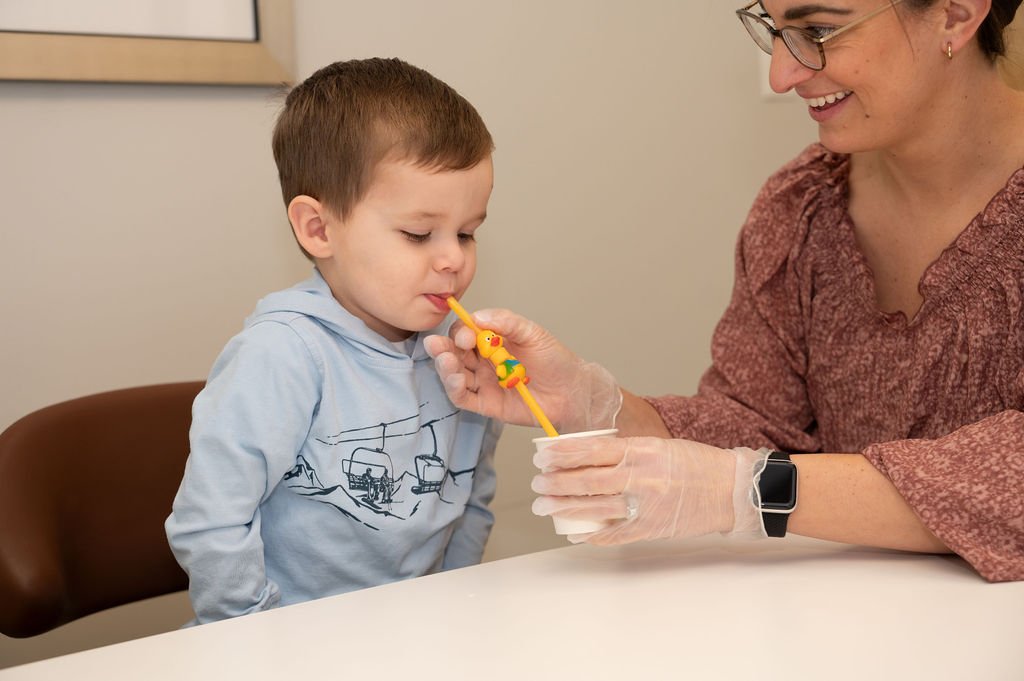Speech Sound Disorders
What are Speech Sound Disorders in Children?
As children learn to talk, they often say sounds and words incorrectly. These difficulties can be typical in many ways. For example, a toddler may say “wawa” instead of “water”, or a preschooler may say “wabbit” instead of “rabbit.” However, as children grow older, they learn to say sounds correctly. Different sounds and patterns have an age of mastery. In other words, children should be able to say certain sounds by certain ages. Most children will work through these independently, and don’t need direct teaching or speech therapy. A child who is not learning to say sounds by their expected ages may have a speech sound disorder and would benefit from speech therapy.
Types of Speech Sound Disorders
“Speech sound disorder” is an umbrella term referring to any difficulties regarding the perception and production of speech sounds. When we think of speech sound disorders, we can categorize them into articulation, phonological and motor based. Here we’ll talk about the difference between articulation and phonological disorders.
-
Description text goes heArticulation refers to how we make sounds. Producing sounds requires the coordinated movements of necessary body parts (e.g. lips, tongue, teeth, palate, lungs). If a child has an articulation disorder, they have trouble making certain sounds. For example, they may not be able to move their tongue into the right position to say the r sound, so they say “wed” instead of “red.” An articulation disorder may also relate to a lisp, so their s sounds like a th (e.g. “that” instead of “sat”). This can affect overall speech clarity and make communication challenging.
Articulation disorders can occur due to a variety of factors, including oral-motor difficulties, hearing impairments, or developmental delays. If left unaddressed, they can affect a child's confidence and ability to be understood by others.
-
Phonology refers to the way we organize speech sounds to formulate words. Phonological disorder is a speech sound disorder where a child has difficulty organizing the sound patterns of language. Unlike articulation disorders, which affect the ability to physically produce specific sounds, phonological disorders involve patterns of errors related to the linguistic and cognitive processing of speech and language. The use of phonological patterns is typical as children are developing their language and attempting to approximate adult speech. However, if children continue to use these patterns beyond their expected ages, they likely need direct speech therapy to help. Some examples of phonological patterns include, cluster reduction (e.g. “side” for “slide”), gliding (e.g “wion” for “lion”) and fronting (e.g. “tan” for “can”).
Phonological disorders can occur without a known cause or may be linked to developmental delays, hearing loss, or neurological conditions. If left untreated, they can affect a child’s reading, spelling, and overall communication skills.
Summary
In conclusion, both articulation and phonological disorders can impact a child’s speech intelligibility. Phonological disorders often affect overall communication more significantly. Speech therapy approaches differ based on the type of disorder. Articulation therapy focuses on helping a child correctly produce specific sounds, while phonological therapy targets patterns of errors to improve the child’s understanding of speech rules.
If your child is struggling with speech clarity, our speech-language pathologists can assess whether the difficulty stems from an articulation disorder, a phonological disorder, or both. We use specialized techniques to help children learn proper tongue and mouth placement for clearer speech. Therapy may include structured exercises, visual and tactile cues, fun activities to practice correct sound production, and more! Early intervention can make a big difference! If you’re concerned about your child’s speech, a professional evaluation can provide the support needed for clearer communication. Contact us today to learn more about how we can help your child speak with confidence!
Speech Therapy Tools
TalkTools®
Oral-Placement Therapy (OPT) Therapy techniques to add a tactile component to feeding and speech therapy, enabling clients to “feel” the movements necessary for the development of speech clarity.
Speech Buddies Placement Tools®
One of many tools utilized at SLP Center. Your clinician will choose the right tools for your child. At home you may practice learned strategies from speech therapy to see results.
Kaufman Apraxia Treatment®
Method for teaching young children how to produce and combine the oral motor movements necessary to speak functionally, and intelligibly.




